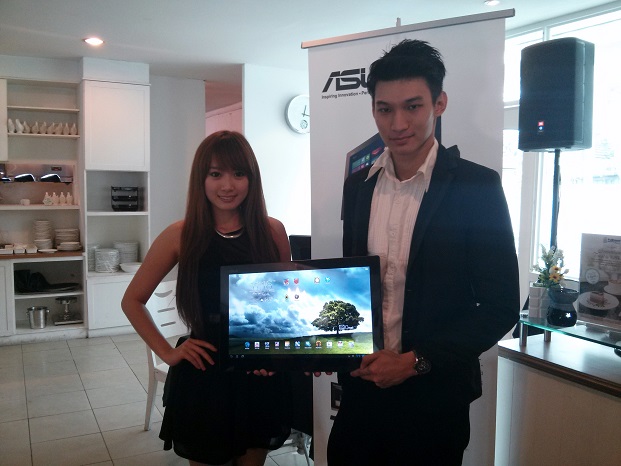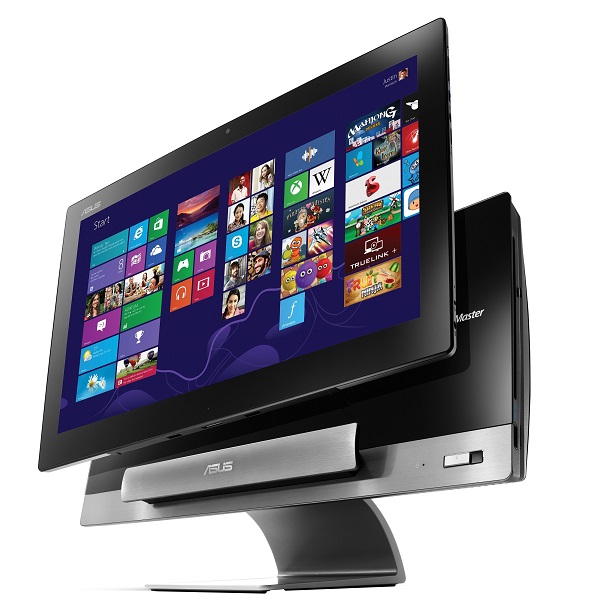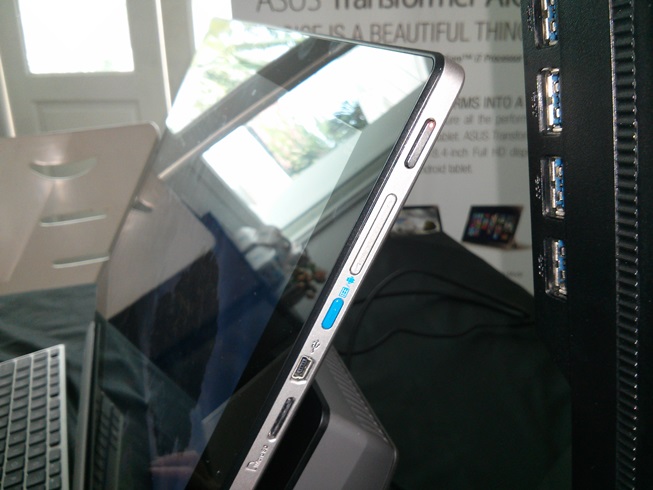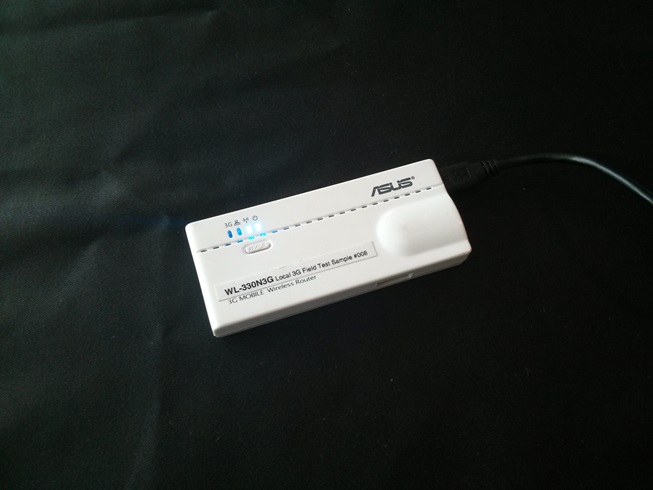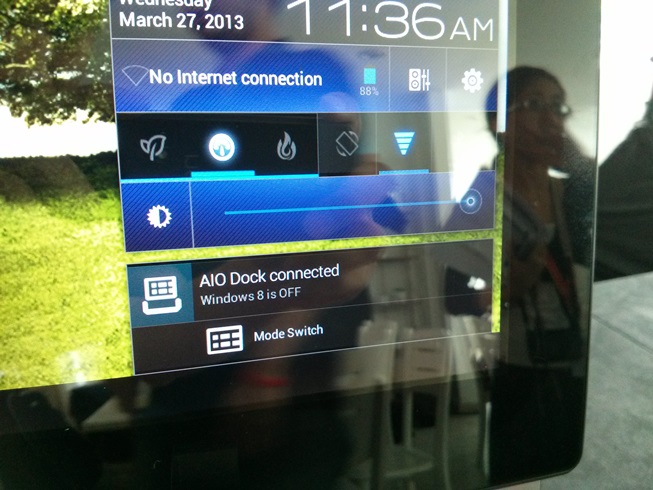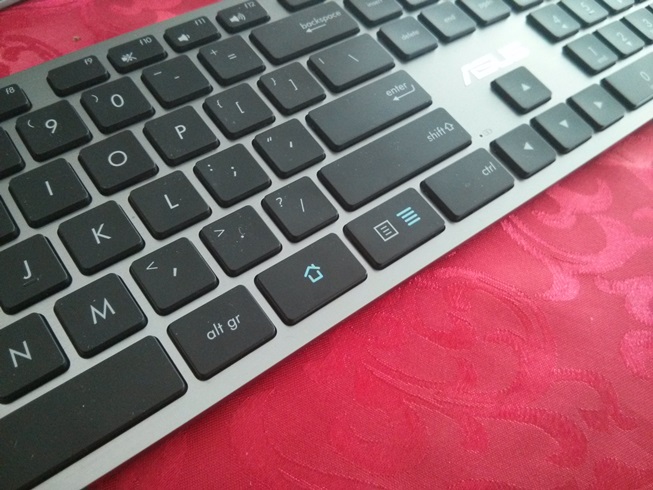Yesterday, ASUS Malaysia launched the new Transformer All-in-One, which is a hybrid AiO where the 18.4-inch screen is actually a detachable tablet. More interesting is the fact that the tablet runs on Android 4.1, while the AiO system runs on Windows 8. Add the dual processors into the mix, and it could be a very confusing affair to explain just how the Transformer AiO works.
We spoke to some of the ASUS reps at the event, and they give the low-down on how the Transformer All-in-One works.
Article continues after the break.
What’s the difference between dual OS and dual boot?
When one mentions dual-booting a device, it usually means having two bootable operating systems in said device. However, it also means that while said device can boot two different operating systems, only one OS will run at any given time. The ASUS Transformer AiO defies this rule, and can run both Windows 8 and Android simultaneously.
However, Windows 8 and Android runs on different architectures, which mean that an ARM-based processor cannot run Windows, while an x86-based processor cannot run Android. So how can the Transformer AiO run these two OSes at the same time?
http://www.youtube.com/watch?v=oTKuWlx-tIY
Actually, the Transformer AiO has essentially two separate systems. As ASUS puts it, the Transformer AiO is “dual OS, dual devices”. The PC Station holds the PC components: Intel Core i7 processor, NVIDIA desktop GPU, large amounts of RAM, massive hard disk, and a plethora of connectivity options only a device as large as a PC can hold. Similarly, the tablet portion of the Transformer AiO holds the NVIDIA Tegra 3 quad-core processor, low-power RAM and 32GB of flash storage.
So, they’re basically two devices?
Correct. The PC Station, which houses the Intel chip, runs Windows 8 regardless of whether the tablet is docked to the Station or not. (It also means that when you connect a monitor to the Station, it will run Windows 8 while the tablet will still function normally on Android) The tablet, on the other hand, runs Android 4.1 independently from the Station.
What enables Windows 8 to run on the tablet portion is actually a pretty nifty trick. A single blue button on the tablet’s right side switches the OS from Android to Windows 8 and vice versa. There’s also an option in the drop-up settings on the Android menu. This works even if the tablet is not docked to the Station.
Is it really that simple?
Actually, the solution ASUS came up with is rather ingenious. A tablet which houses a desktop CPU and GPU is simply not feasible: they produce too much heat, which means even a tablet as large as this cannot dissipate heat quickly enough from the user (who, bear in mind, is also holding the tablet).
The next best thing would be to stream Windows 8 wirelessly to the tablet. This solution means that the tablet does not need any crazy hardware to run Crysis (and thus retain a tablet’s portability factor) while still being able to be productive on Windows – which is exactly what ASUS is trying to achieve with the Transformer AiO. You could work on a Word document while replying emails from the bedroom while the Station is located in the living room, for example.
It is a delicate balance, and one that also has its flaws. For instance, to sync the PC Station wirelessly to the tablet (when not docked), the Transformer AiO uses an app, which in turn syncs the two wirelessly via WiFi. So, while the Transformer AiO does not need a constant Internet connection it does, however, need a router. An ASUS rep did mention that they might bundle a portable router (above pic) with the AiO, but so far there is no word on that front just yet.
What happens if I don’t connect the two devices wirelessly?
When docked, users can access files stored in both the tablet and PC Station via the app. When not docked, the tablet will still run Android perfectly. However, should you need to switch to Windows for any reason whatsoever, clicking the blue button is not a good idea. We tried that during the launch event, and the screen immediately went black and we couldn’t find a way to go back to Android without rebooting the device.
On a less extreme note, files stored in the PC Station (i.e. Windows) cannot be accessed from the tablet when they’re not connected. This is one of the limitations of having the two devices connected wirelessly, where the two devices really become two separate devices. Due to the different architectures (not to mention physical locations) of the files, the tablet cannot “call” the files like it can when docked or connected via router.
For the best experience of the Transformer AiO, it is highly recommended that they are always connected and in sync.
If I own a Transformer AiO, am I correct if I boast that my tablet can run Crysis?
Technically, when on Windows, the app puts Android OS to sleep and switches the display to sync with the PC Station. What it means is that when on Windows 8, the tablet is just acting as a portable touch monitor.
On the other hand, the PC Station will effortlessly run Crysis. Put a little spin to the story and yes, your king-sized tablet can run Crysis. Just remember to connect a wireless gamepad to the PC Station first before showing off, though.
Follow us on Instagram, Facebook, Twitter or Telegram for more updates and breaking news.


